I firmly believe that you can’t get a good overview of a city if you don’t visit at least one museum. The Gothenburg Museum of Art is one of these institutions that everyone dreams of discovering while traveling. Housed in Sweden’s second-biggest city and hosted on a six-floors building, Gothenburg’s Art Museum is one of the best things to see in town. Its stunning collection guarantees a fantastic experience: apart from masters like Pablo Picasso or Edvard Munch, you’ll also come across local and contemporary artists.
Moreover, the museum enjoys a strategic location at the edge of Avenyn boulevard. The museum is close to other Gothenburg attractions like Liseberg or the Universeum, making it a perfect stop on your wanderings around the city. Therefore, since you’ll most likely visit this side of town, don’t miss the Göteborgs Konstmuseum.
In this article, you’ll see plenty of photos from the museum’s collection and the building itself. Apart from that, I will also share a guided tour to help you make the most of your visit. Finally, I’ll share my thoughts about the Gothenburg Museum of Art and why you should visit it.
Let’s start.
*Some of the links are affiliate links. It means that if you buy something, I might earn a small commission at no additional cost to you.
The Gothenburg Museum of Art: the city’s gem

So, in this section, I’ll reply to every question regarding your visit to the Gothenburg Museum of Art. However, please add your question in the comments below if you think something is missing.
How can I reach the Gothenburg Art Museum?
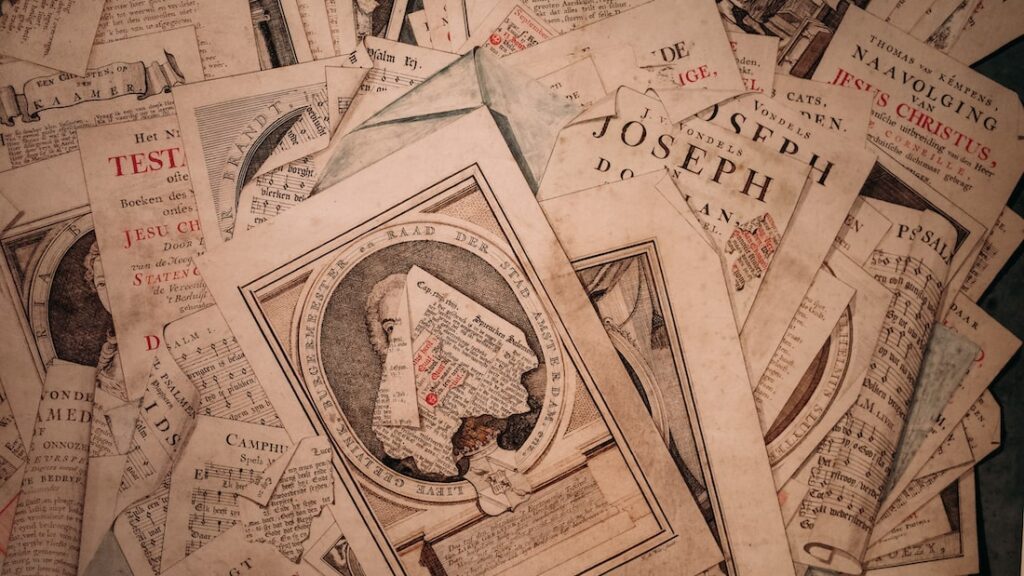
It’s pretty easy to reach the museum. Actually, heading from Gothenburg’s train station to the museum is just a twenty-minute walk. If you indeed decide to reach the Art Museum on foot, you’ll also see a good part of Gothenburg’s downtown. Moreover, you’ll come across some of the city’s landmarks and stroll around the famous Avenyn boulevard.
Alternatively, you can reach the museum by bus or tram if you’re on a tight schedule. Specifically, bus 18 will bring you straight to Göteplatsen, the square in front of the museum. On the other hand, you can ride trams No. 4 and 5 to the nearby Berzeliigatan stop. Then you just follow Berzeliigatan Street for a couple of meters, and you’ll be straight to the museum.
Where exactly is the museum?
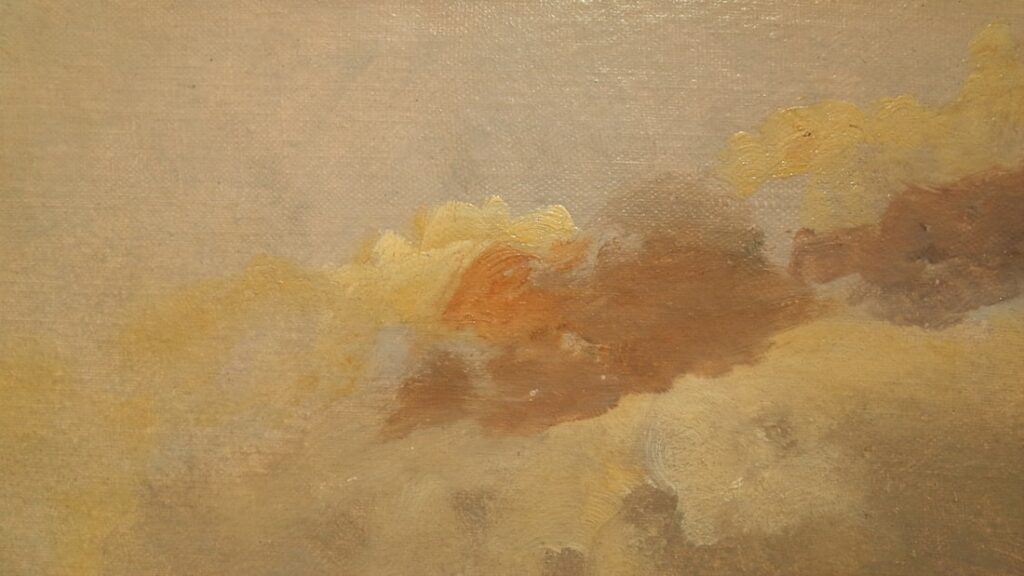
The Gothenburg Museum of Art address is Götaplatsen 7, 412 56 Göteborg. You can see its location on Google Maps here. Make sure to bookmark it so you can easily retrieve it anytime.
How much is the ticket?
At the time of writing, the Gothenburg Museum of Art only accepts card payments. A single ticket for adults costs 60 SEK. Visitors younger than 20 years old are admitted for free.
Tip: how to quickly convert SEK to USD or EUR.
Sweden’s currency is the Swedish krona (SEK). The tip I’ll write down here helped me convert the prices quickly. However, this is just an approximation, and it’s not totally accurate. But, if you don’t want to use a calculator all the time, that’s the quickest way.
So, whenever you see a price in SEK, all you have to do is add a decimal point before the last digit. That said, for the Art Museum of Gothenburg, the 60 SEK will be close to 6.0 euros or 6.0 USD. But, once again, that’s an approximation. The exact cost will be 5,81 EUR or 6,43 USD for the record. This is just to get a quick impression of the costs; you’ll have to use a calculator if you need the exact amount.
What can I see at the Gothenburg Museum of Art?

After the practical info about your visit, here is the exciting part. The Gothenburg Museum of Art is the third biggest museum in Scandinavia. While you can, apparently, expect lots of Scandinavian artists, there are also plenty of old masters on display. As I already wrote, the museum has six floors. The museum’s personnel will advise you to take the lift to the 6th floor and make your way down. However, that’s totally up to you.
So, here’s what you can see in each of them.
Ground floor (called the first floor in Sweden)

Here you’ll find the Stena gallery hosting temporary exhibitions. You will also see the Hasselblad Foundation, which presents three exhibitions per year, and one is always dedicated to the annual Hasselblad Award Winner.
Second floor
The museum’s second floor is all about temporary exhibitions as well. During my visit, I had the chance to discover an artist I had never heard of: Barbro Östlihn. Read my article about Östlihn here.
Third floor
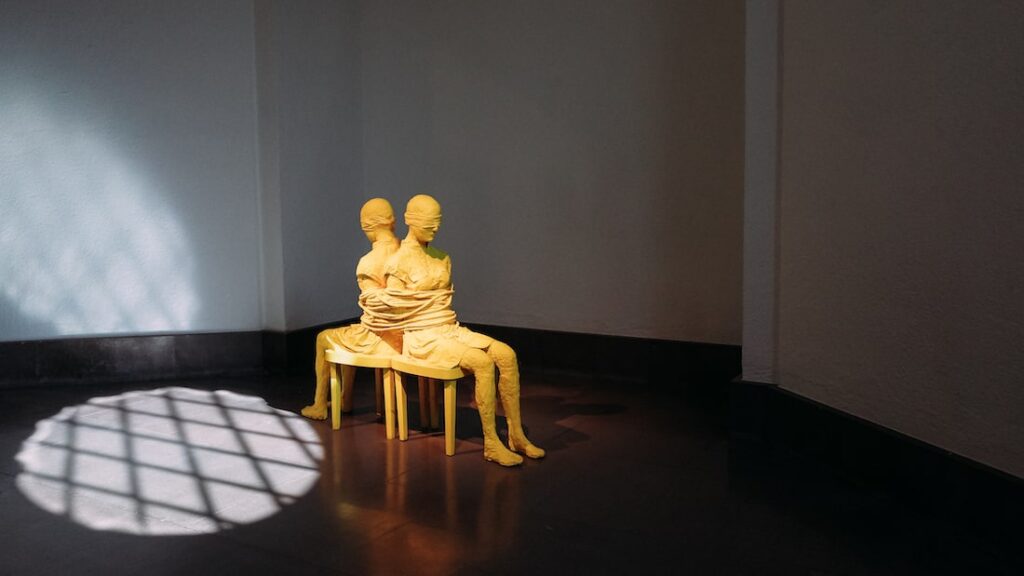
The museum’s third floor is all about sculptures, and it’s one of the most impressive sections. In the so-called Sculpture Hall, you’ll discover the works of contemporary artists like Patrik Bengtsson next to modernists like Marino Marini and Louise Nevelson. I was also impressed by Charlotte’s Gyllenhammar “Double Blind.”
You’ll also find the Self-portraits Room on this floor, where famous artists explored their identities by creating self-portraits. Most of them are from Scandinavia, but you’ll also see self-portraits by Kathe Kollwitz and Marc Chagall.
Fifth floor

The museum’s fifth floor is split into three subsections. The first one is the Sergel Gallery, where you can see sculptures of Sweden’s most famous 18th-century sculptor, Johan Tobias Sergel. In the next room, you’ll see Nordic art dating between 1750 and 1880. There’s a great mixture of painters like Peder Balke, Alexander Roslin, and Sofie Ribbing.
Finally, in the third room on the floor, it’s time for the Old Masters (1450-1750). Here you’ll come across Rembrandt’s iconic “The Knight and the Falcon” and several famous paintings of the era.
Sixth floor

The sixth floor is probably the richest one -and maybe that’s why it’s recommended to start from here. That’s where the world-famous Fürstenberg gallery is, presenting works of Anders Zorn and Per Hasselberg. On this floor, you can see paintings by Edvard Munch, and there’s also a room dedicated to Pablo Picasso. Equally impressive are the rooms about the Swedish modernists and the French impressionists (Gaugin, Degas, Monet).
However, I must admit that my favorite rooms on this floor (and probably on the whole museum) are the ones about the Gothenburg Colorists and Ivar Arosenius. In these two rooms, I discovered artists that I had never heard of before. The Gothenburg Colorists made intense use of colors, and I was specifically impressed by the works of Ragnar Sandberg. Last but not least, in the Arosenius Room, I saw for the first time Ivar Arosenius’s paintings that have a fairy tale touch.
Is there a guided tour?

Yes, you can have a guided tour around the Gothenburg Museum of Art. Your tour guide will pick you up from your hotel in Gothenburg and drive you to the museum. The price includes the ticket, and you’ll skip the line. After the tour, your guide will drive you back to your hotel. That’s an excellent guided tour for people on a tight schedule or for art lovers that would love to know more about the collections.
You can book the museum tour here.
Where can I find the current exhibitions of Gothenburg’s Art Museum?
The Gothenburg Museum of Art organizes several exhibitions annually. You can see the current exhibitions on the museum’s official website.
What are the opening times of the Göteborg Museum of Art?
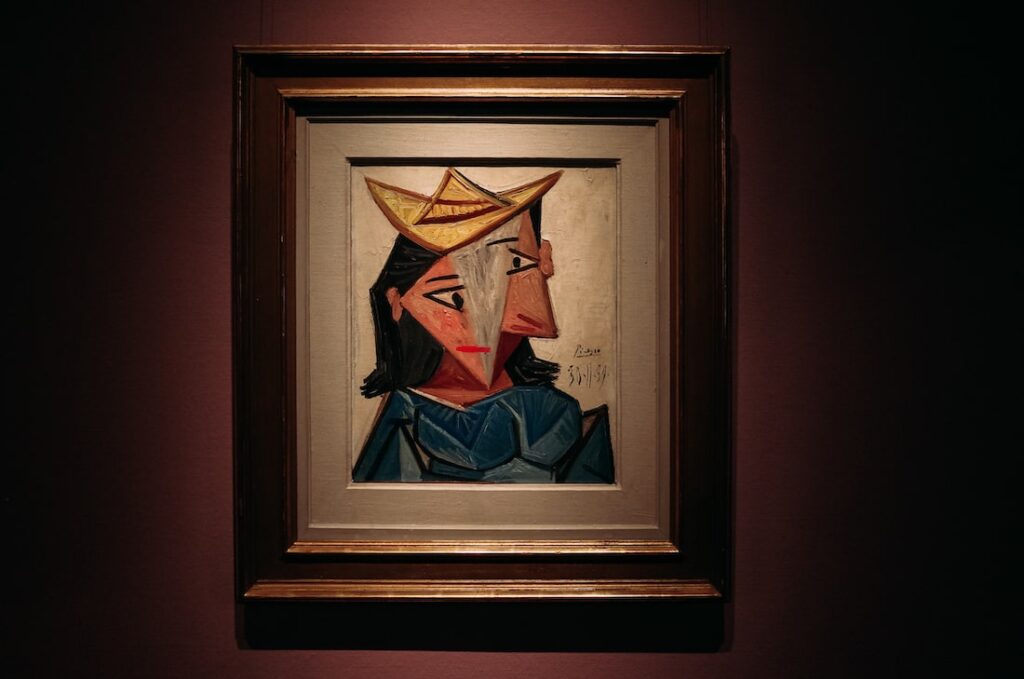
The Museum is closed on Mondays. Moreover, it opens rather late, at 11 am. Specifically, it’s open Tuesday and Thursday from 11-18, on Wednesdays from 11-20, and Friday to Sunday from 11-17.
How much time does it need to go through the museum?
While this is definitely up to you, you should calculate 2 hours if you want to see the whole museum. You can, of course, go through it in one hour -but you can also spend half-day there.
Does the museum have a cafe?

The Gothenburg Museum of Art is home to a fabulous cafe-restaurant called Mr. P. The menu has a great variety, and it’s a perfect spot to unwind day and night. Check Mr. P here.
Where to stay close to the Gothenburg Museum of Art?
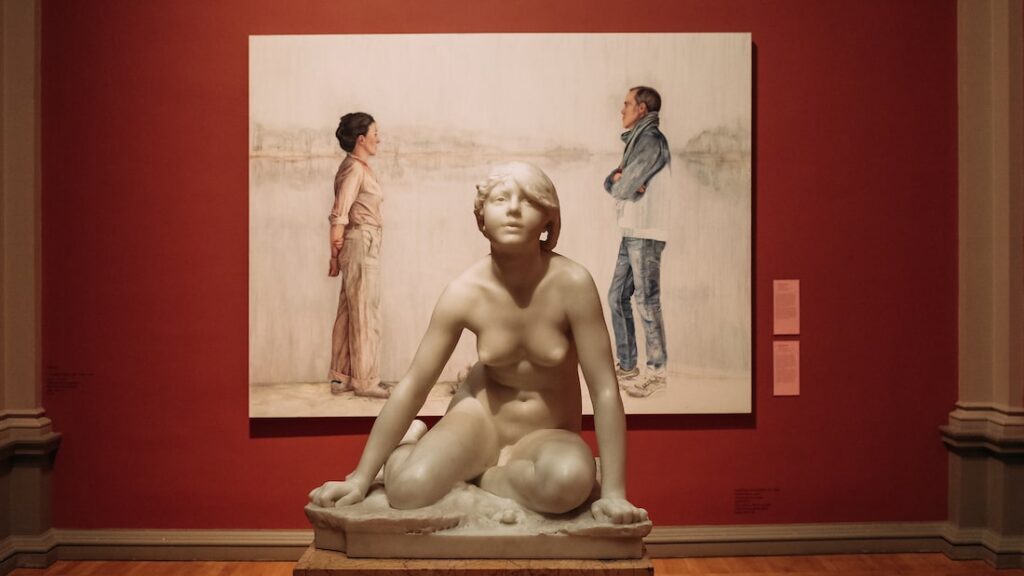
Despite having almost half a million inhabitants, Gothenburg feels really compact. While most of the accommodations are around the central station, there are some great hotels and places to stay on this side of Gothenburg. Moreover, the area around the museum feels quieter, and you’ll have the opportunity for some great sightseeing (see the section below for some recommendations.
That said, the best hotels close to the Gothenburg Museum of Art are:
Gothia Towers. Located straight opposite Liseberg and featuring a 23rd-floor bar, Gothia Towers is one of the unique Gothenburg accommodations. The rooms are spacious, and the views breathtaking. Book your room at Gothia Towers.
Hotell Onyxen. This hotel is situated in a 19th-century building just a couple of steps away from the museum. It offers free WiFi, a nice bar, and complimentary tea and coffee all day long. Book your room at Hotell Onyxen.
Hotel Lorensberg. That’s a great family run with cozy rooms and many original paintings on the walls. The hotel also has a sauna and a beautiful garden. That’s a very local place to stay for art lovers. See more about Hotel Lorensberg.
Elite Park Avenue Hotel. This hotel offers typical Swedish rooms on Gothenburg’s main street, Avenyn. It also has a sauna and a popular restaurant. Book your room at Elite Park Avenue Hotel.
What else is there to see around the Gothenburg Museum of Art?
As I mentioned in the beginning, there are plenty of Gothenburg attractions nearby. That said, if you are on a short visit to Gothenburg, make sure to spend a day on this side of the city. Here’s what you can see close to the museum:
- Göteborgs Konsthall, featuring contemporary art.
- The Museum of World Culture
- Universeum, featuring, among other things, a rainforest and an aquarium.
- Liseberg, Gothenburg’s world-famous amusement park.
Why you should visit the Gothenburg Museum of Art
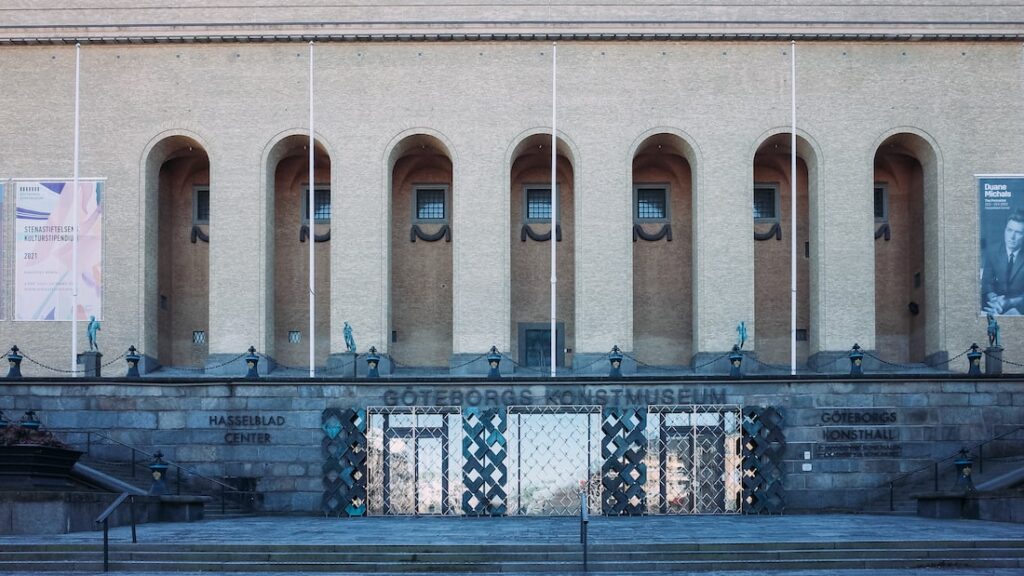
The Gothenburg Museum of Art is one of the most iconic museums in Scandinavia. Its collection has more than 70,000 items, and walking through the floors is a great pleasure. In my opinion, the most important aspect of the museum is that it will introduce you to Nordic Art and let you discover artists you didn’t know before.
Being one of the most prominent museums in the region, the Gothenburg Museum of Art was also awarded three stars in the Michelin Green Guide. If artists like Bruno Liljefors, Carl Larsson, or Ragnar Sandberg don’t ring a bell, it’s time to discover them. And if you know them already, it’s the best place to see their works up close. So don’t miss the chance to visit the Göteborg Museum of Art: it is hands down one of the best things to do in Gothenburg, Sweden.
More about Gothenburg, Sweden: Gothenburg travel guide, My travelogue, Hotel Royal Göteborg review
Pin it for later
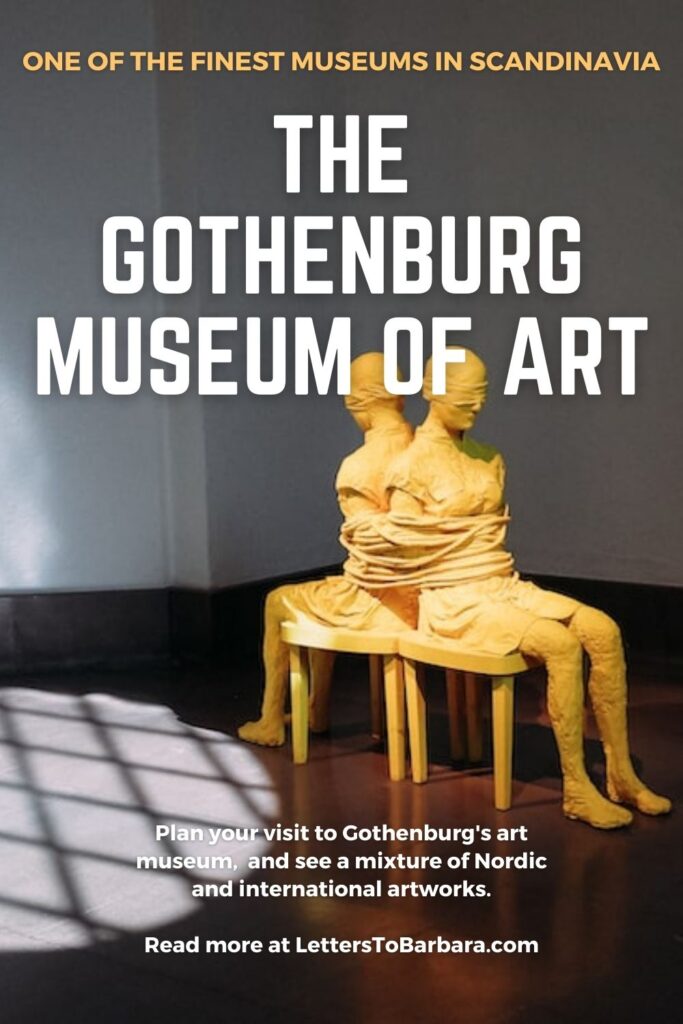
Share this article with your friends if you enjoyed reading about the Gothenburg Museum of Art.
Last Updated on July 23, 2022 by George Pavlopoulos

